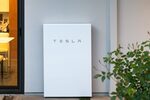*Price includes GST. Does not include delivery, installation, or other costs and fees. Final price will be provided by a Certified Installer.
Keep in mind this price is before installation and delivery.
That said, in the US the PowerWall (PW) 2 and PW3 have been the same price. Yet the PW3 includes an inbuilt inverter.
PW3 has 11.5kW of continuous power and 13.5KWh of capacity.
Once the NSW government battery rebate hits on 01.11.24 the price of these could drop to around $11k installed, which seems to be reasonable since most people are pretty much giving away their solar to the grid now.
The other thing to keep in mind is that you can recharge from the grid. So if you use OVO you can recharge from 11am - 2pm for free (though that’s when you solar will be pumping) and you can also recharge the PW with offpeak power from 12am - 5pm.
The downside of the PW is that it’s not modular, unlike the other two which are highly rated by Solar Quotes, the SolarGrow and BYD home battery systems. Where you can add a few KWh of storage easily and (potentially) make use of falling battery prices.


Up to you how you dish out your money